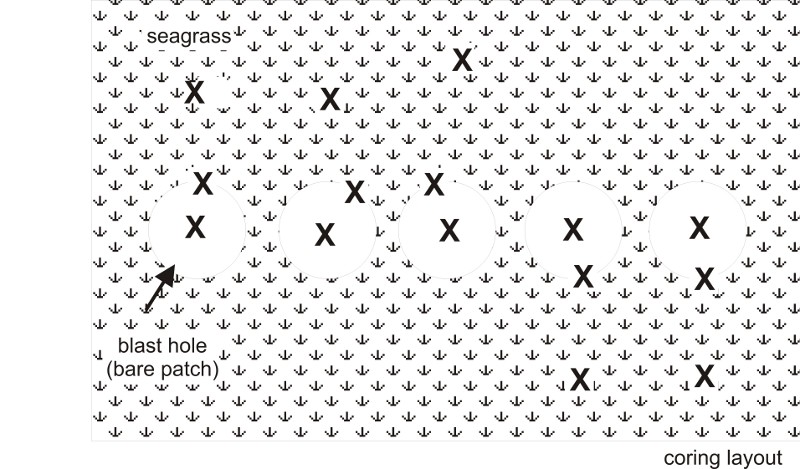Living Data
Evolving conversations 
University of Technology, Sydney Main Entrance Foyer, 3 Sept 2014 - 20 Nov 2014
In Ultimo Science Festival, Sydney3-12 Sept 2014
 Brenden O'Keeffe
Brenden O'Keeffe
Brendan is an Environmental Science Honours student at the University of Technology, Sydney. He studies the stability of Holocene "blue" carbon in seagrass meadows in Jervis Bay, NSW. What does the sediment core below tell us? Does this information relate to the maps?

BrendanO'Keeffe Jervis Bay Sediment Core 2014

BrendanO'Keeffe Jervis Bay Core Drilling Layout 2014
Story:
My study for 2014 will be looking at the sediment beneath the *Posidonia australis* seagrass meadow in Jervis Bay, NSW. This area was subjected to rigorous seismic testing in the 1960's, and the purpose of my study is to observe the extent of the impact of these detonations on the geophysical and biological records of the area. By extracting cores such as these, a snapshot of space and time can be examined for any number of properties (such as blue carbon sequestration) as well as determining the area's response to anthropogenic disturbances over time. It is my hope that this study will provide a paleoclimatic image of the recovery of the site, and will provide a data set that can be used in future management of Jervis Bay, which was listed as a Marine Park in 1998.
Jervis Bay is close to the edge of the continental shelf, where deep water nutrients are welled up to the surface by the large and powerful East Australia Current. These nutrients then enter the bay and contribute to the exceptional marine values of Jervis Bay. Values we protect include substantial seagrass communities, large populations of bait fish, a thriving Little Penguin colony on Bowen Island, rare shorebirds such as the Sooty Oyster Catcher (which nests on the shores of Bowen Island), and the rare Hooded Plover (which nests on Bherwerre Beach).

Signs at Jervis Bay beach











